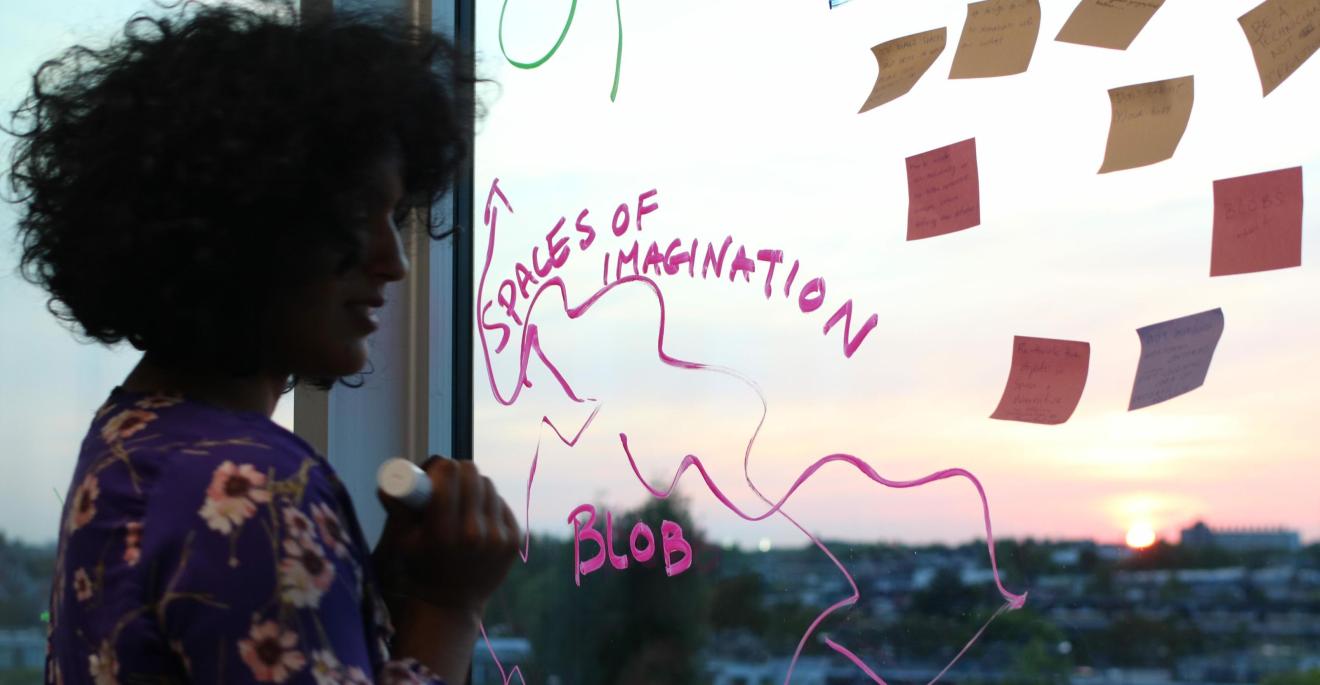Living Statistics
For architects, designers, civil servants, politicians and cultural workers who are professionally engaged in imagining the future of urban environments, participation can no longer be just about the design outcomes, or whether or not our specific building vision is realized. Rather, we must consider how designing participation is crucial to shaping the mindset of the people who will occupy these future spaces, especially their sense of ownership, belonging and engagement in the life of the future city. Our ability to expand and experiment with processes of participation and citizenship must become a part of the way we produce and evaluate good design.
There is a great deal of work to be done to develop new participation models, tailored to the needs of each locality and design project. This means not only expanding the minds of the professionals who lead participation processes, but also communicating the cultural opportunity that is available to the public to redefine what participation itself could mean. In other words, we must accept that architects are no longer the only people, or even the most important people, making design decisions in a given project. Creating spaces in which that multi-vocal conversation can happen productively, and then actively facilitating that conversation, is the work of cultural practitioners and of any creative and publicly-oriented professionals who are concerned about the future of the city, including architects. This important facilitation process could, and probably should, be happening even when there is not a current planning process ongoing.
Currently, mainstream participatory design models focus on traditional public information meetings (e.g. residents evenings) usually organized by local municipalities and developers and the statistical models created by companies such as Citisens. In the advice provided to leaders of new planning projects by the Brabant regional authority, Citisens is mentioned as a major source of information related to public opinion of public space and other relevant matters. For example, When municipalities around the Netherlands wish to design a new housing development, or find out public attitudes about the opening of a new center to accommodate Ukrainian refugees, Citisens provides the market research and polling and tests the ideas. According to the company’s website, Citisens focuses on issues of “area development, energy transition and democratic renewal.” [2] The Citisens Method relies on the “responses of a group of about 75,000 Dutch people who regularly give their opinion on social issues.” With the decentralization of participation processes, and increasing responsibility of each municipality to produce its own data-driven evidence of public participation in each major design project, reliance on the information provided by Citisens will likely become more and more valuable in design processes. The work of these companies clearly indicates that meaningful public participation in design processes can be connected to having deeper experiences of citizenship. What is the role of art, design, architecture and cultural workers in facilitating these more robust experiences?
An example of cultural workers opening space for re-thinking participatory design can be seen in the work of the Brabant-based artist collective YAFF. Working in cities such as Tilburg and Boxtel, the collective conceives and implements social art and design interventions in public spaces. In the project Leven de Statistiek, YAFF begins from the premise that the statistical models by which we determine the reality around us—the economy, the population demographics, the available natural resources, the rate of environmental pollution—are themselves “simplified ideologies,” which are biased by our pre-existing worldviews and perspectives. Prior to the local elections in Boxtel, YAFF presented a “living graph” of the municipal budget, making clear that 85% of the funds had already been allocated by the government, leaving only 15% “in play,” for public participatory decision-making. This living graph, a color-coded, accessible and three-dimensional infographic, was made of pieces of colored paper attached to a large display board with wheat paste and displayed in a ground-floor window facing the public street. Through conversations with Boxtel residents, and after attending various public information meetings, YAFF modeled a process of participatory budgeting: “Based on conversations with citizens we changed the graph and this ‘Living Statistic’ depicted the consequences of both cutting back and wanting to invest more in certain areas. Thus, assumptions were questioned and [budgetary] choices were put in a different perspective.” [3] This approach to participation does not simply represent the residents as an aggregate opinion, as in a survey, or inform residents of new municipal developments, as in an information evening, but rather uses creative tools to engage people at a deeper level of questioning the premises of how and why their local municipal budget is designed in this way. This kind of engagement, I would argue, creates the awareness and experience of (self-)government that leads to more active citizenship and resident involvement in future public design processes.


